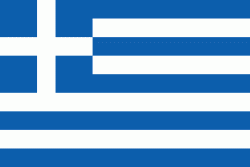Tsakonia (Nomós Lakonías)
Tsakonia (, Tsakoniá; Tsakonian: Τσακωνία, Tsakonía ) or the Tsakonian region (Τσακωνικός χώρος) refers to the small area in the eastern Peloponnese where the Tsakonian language is spoken, in the area surrounding 13 towns, villages and hamlets located around Pera Melana in Arcadia. It is not a formally defined political entity of the modern Greek state.
In his Brief Grammar of the Tsakonian Dialect published in 1951, Prof. Thanasis Costakis defines Tsakonia as the area from the town of Agios Andreas in Kynouria south to Leonidio and Tyros and inland as far as Kastanitsa and Sitaina, but asserts that in former times the Tsakonian-speaking area extended as far as Cape Malea in eastern Laconia. The principal town in Tsakonia at this time was Prastos, which benefited from a special trading privilege granted by the authorities in Constantinople. Prastos was burned by Ibrahim Pasha in the Greek War of Independence and was abandoned, with many of its residents fleeing to the area around Leonidio and Tyros or other spots on the Argolic Gulf.
Some early commentators seem to have confused the speech of Maniot dialect speakers with true Tsakonian, demonstrating the flexible nature of the term.
The actual Tsakonian speech community has shrunk greatly since Brief Grammar was published, but the area delineated by Costakis is still considered "Tsakonia" due to the preservation of certain cultural traits such as the Tsakonian dance and unique folk costumes.
The Tsakonian speaking region was once much more widespread than it was at the time of Brief Grammar; Evliya Çelebi noted in 1668 that the village of Vatika, far south of Leonidio, was Tsakonian; however that place would later be resettled by Arvanites; the Chronicle of Morea (14th century) furthermore indicates that Tsakonian was spoken in Cynuria, which is now part of Arcadia but was once considered to be in the northeast of Laconia. The original Tsakonian region may have consisted of the entire eastern half of Laconia.
In his Brief Grammar of the Tsakonian Dialect published in 1951, Prof. Thanasis Costakis defines Tsakonia as the area from the town of Agios Andreas in Kynouria south to Leonidio and Tyros and inland as far as Kastanitsa and Sitaina, but asserts that in former times the Tsakonian-speaking area extended as far as Cape Malea in eastern Laconia. The principal town in Tsakonia at this time was Prastos, which benefited from a special trading privilege granted by the authorities in Constantinople. Prastos was burned by Ibrahim Pasha in the Greek War of Independence and was abandoned, with many of its residents fleeing to the area around Leonidio and Tyros or other spots on the Argolic Gulf.
Some early commentators seem to have confused the speech of Maniot dialect speakers with true Tsakonian, demonstrating the flexible nature of the term.
The actual Tsakonian speech community has shrunk greatly since Brief Grammar was published, but the area delineated by Costakis is still considered "Tsakonia" due to the preservation of certain cultural traits such as the Tsakonian dance and unique folk costumes.
The Tsakonian speaking region was once much more widespread than it was at the time of Brief Grammar; Evliya Çelebi noted in 1668 that the village of Vatika, far south of Leonidio, was Tsakonian; however that place would later be resettled by Arvanites; the Chronicle of Morea (14th century) furthermore indicates that Tsakonian was spoken in Cynuria, which is now part of Arcadia but was once considered to be in the northeast of Laconia. The original Tsakonian region may have consisted of the entire eastern half of Laconia.
Map - Tsakonia (Nomós Lakonías)
Map
Country - Greece
 |
 |
| Flag of Greece | |
Greece is considered the cradle of Western civilization, being the birthplace of democracy, Western philosophy, Western literature, historiography, political science, major scientific and mathematical principles, theatre and the Olympic Games. From the eighth century BC, the Greeks were organised into various independent city-states, known as poleis (singular polis), which spanned the Mediterranean and the Black Sea. Philip II of Macedon united most of present-day Greece in the fourth century BC, with his son Alexander the Great rapidly conquering much of the ancient world, from the eastern Mediterranean to the North Western parts of India. The subsequent Hellenistic period saw the height of Greek culture and influence in antiquity. Greece was annexed by Rome in the second century BC, becoming an integral part of the Roman Empire and its continuation, the Byzantine Empire, which was culturally and linguistically predominantly Greek.
Currency / Language
| ISO | Currency | Symbol | Significant figures |
|---|---|---|---|
| EUR | Euro | € | 2 |
| ISO | Language |
|---|---|
| EN | English language |
| FR | French language |
| EL | Greek language |















